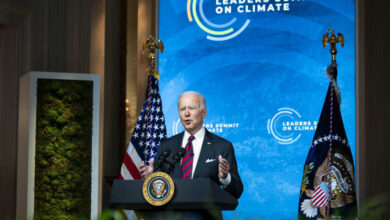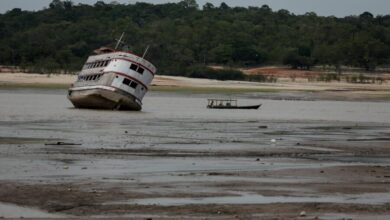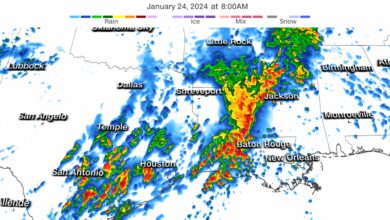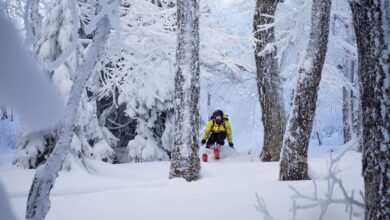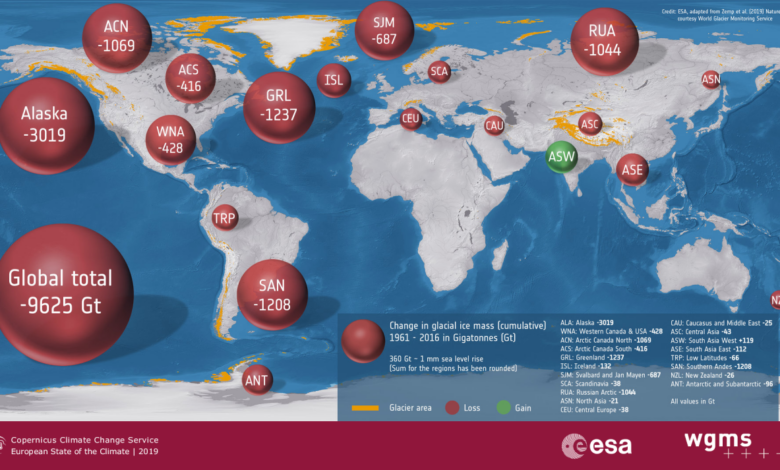
Glacier Engineering & Sea Level Rise A Critical Look
Glacier engineering sea level rise presents a complex and urgent challenge. Glaciers, crucial components of the global water cycle, are rapidly melting, contributing significantly to rising sea levels. This intricate relationship demands innovative engineering solutions, careful consideration of potential impacts, and a deep understanding of the interplay between human intervention and natural processes.
From the design of ice dams to the analysis of coastal vulnerability, this exploration dives deep into the multifaceted issue of glacier engineering and sea level rise. We’ll examine potential solutions, their potential benefits and drawbacks, and the complex interplay between these two critical global issues.
Introduction to Glacier Engineering and Sea Level Rise
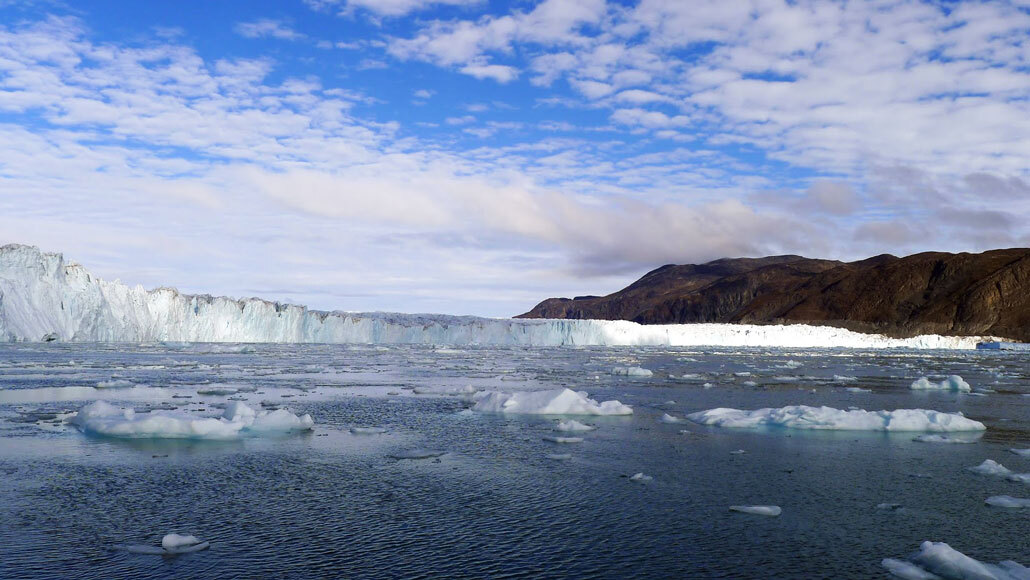
Glacier engineering is a relatively new field focused on managing and mitigating the impacts of glaciers, particularly in the context of rapidly changing climate conditions. It involves a range of techniques, from modifying glacier flow paths to potentially altering glacial melt rates, aimed at addressing the challenges posed by retreating glaciers and the resulting sea level rise. This complex issue requires a multifaceted approach, combining scientific understanding with practical engineering solutions.Glaciers are vital components of the global water cycle, storing vast amounts of freshwater and influencing regional and global climate patterns.
Their gradual melting, a consequence of global warming, directly contributes to rising sea levels, a phenomenon with far-reaching implications for coastal communities and ecosystems worldwide. The intricate interplay between glacier dynamics and sea level rise demands careful consideration and proactive intervention.
The Role of Glaciers in the Global Water Cycle
Glaciers, vast ice formations, play a crucial role in the global water cycle. They store a significant portion of the Earth’s freshwater, and their meltwater contributes substantially to river systems, impacting downstream ecosystems and human populations. The glacial meltwater, fed by precipitation and snow accumulation, shapes landscapes and supports aquatic life. Disruptions in this delicate balance can have cascading effects on both natural and human systems.
Glacier Melt and Sea Level Rise
The connection between glacier melt and sea level rise is undeniable. As glaciers melt, the water released flows into the oceans, directly increasing their volume. This process, accelerated by global warming, is a primary driver of current and future sea level rise. The rate of melt varies significantly depending on the glacier’s size, location, and the surrounding climate.
For example, the melting of the Greenland ice sheet, a massive glacier, contributes significantly to global sea level rise.
Impacts of Sea Level Rise on Coastal Communities and Ecosystems, Glacier engineering sea level rise
Rising sea levels pose significant threats to coastal communities and ecosystems. Coastal erosion, flooding, saltwater intrusion into freshwater sources, and habitat loss are just a few of the potential consequences. Low-lying island nations are particularly vulnerable, facing the potential for displacement and loss of land. The economic and social impacts on these communities can be devastating. Coastal ecosystems, like mangroves and coral reefs, also face severe challenges from rising sea levels, as their habitats are submerged or altered by increased salinity.
Perspectives on Urgency and Potential Solutions
The urgency of addressing sea level rise is widely recognized, although perspectives on the speed and scale of action needed vary. Some argue for immediate and drastic measures to mitigate greenhouse gas emissions and transition to sustainable energy sources, while others emphasize the need for adaptive measures to help communities prepare for the inevitable impacts. Potential solutions range from engineering interventions to protect coastal areas to fostering international cooperation and policy changes to curb greenhouse gas emissions.
Technological advancements, such as developing more efficient desalination plants, can also play a role in adapting to sea level rise.
Comparison of Glacier Types and Melt Rates
| Glacier Type | Location | Typical Melt Rate (mm/year) | Impact on Sea Level Rise |
|---|---|---|---|
| Alpine Glaciers | Mountainous regions | Variable, from a few millimeters to several centimeters per year | Significant contribution, especially in mountainous regions |
| Ice Sheets | Greenland, Antarctica | Variable, from a few centimeters to several tens of centimeters per year | Largest contributor to global sea level rise |
| Piedmont Glaciers | At the foot of mountains | Moderately high, potentially exceeding alpine glaciers | Can contribute substantially to sea level rise, especially in proximity to the ocean |
The table above provides a simplified overview of various glacier types and their approximate melt rates. Melt rates are influenced by a multitude of factors, including temperature, precipitation, and the glacier’s topography. Precise measurement and monitoring are crucial for accurate projections of future sea level rise.
Engineering Solutions for Glacier Management
Glaciers, vital components of the Earth’s hydrological systems, are increasingly vulnerable to the impacts of climate change. Accelerated melt rates contribute significantly to rising sea levels, posing threats to coastal communities and ecosystems. Engineering interventions, while not a panacea, can play a crucial role in mitigating the effects of glacier melt and potentially stabilizing these vital ice formations.
This section explores various strategies for glacier management, highlighting the potential of engineering solutions.Engineering approaches to glacier management aim to slow or halt the rate of glacier melt, often by addressing factors like increased solar radiation or altered snow accumulation patterns. These strategies vary from passive methods like creating protective barriers to more active interventions such as altering the surface properties of the glacier.
The goal is to create a more stable environment that allows the glacier to retain ice mass over time.
Potential Strategies for Mitigating Glacier Melt
Various strategies are being explored to mitigate glacier melt, ranging from passive to active interventions. These strategies aim to reduce the amount of solar radiation absorbed by the glacier surface, enhance snow accumulation, or stabilize the glacier’s overall structure.
- Surface Albedo Modification: Darker surfaces absorb more solar radiation, leading to faster melt. Strategies to increase surface albedo (reflectivity) involve using materials like light-colored pigments or reflective coatings to enhance the glacier’s ability to reflect sunlight. This method aims to reduce the amount of heat absorbed by the ice, slowing the melting process. For example, studies have shown that applying reflective materials to glacier surfaces can effectively increase their albedo, thereby reducing melt rates.
These projects are still in early stages, with ongoing research needed to determine the long-term effectiveness and environmental impact of such interventions.
- Snow Management Techniques: Increasing snow accumulation can help insulate the glacier and reduce direct exposure to solar radiation. This could involve techniques like cloud seeding, aimed at promoting precipitation in the areas surrounding glaciers, or strategically placing barriers to redirect snowfall towards the glacier’s surface. The success of such strategies hinges on understanding the complex interplay between atmospheric conditions and glacier dynamics.
- Ice Dam Construction: Building dams of engineered materials or using existing natural features can create barriers to prevent or slow down the flow of glacial meltwater. Ice dams are a more direct approach to managing the flow of meltwater, aiming to divert it away from the glacier and potentially reduce the rate of melt.
Role of Engineering Interventions in Stabilizing Glaciers
Engineering interventions can play a vital role in stabilizing glaciers by modifying their surface characteristics and reducing the impact of external factors.
- Thermal Barriers: Implementing thermal barriers, such as insulation layers or reflective materials, can help regulate the temperature at the glacier’s surface. By reducing heat transfer, these barriers aim to reduce the rate of ice melt. The efficacy of these barriers depends heavily on their material properties and the specific environmental conditions at the glacier.
- Drainage Modifications: Modifying drainage patterns near glaciers can help divert meltwater away from the ice, preventing the erosion of ice and accelerating the rate of melt. This could involve creating channels or altering existing drainage systems to redirect water flow. This can have positive effects on glacial stability.
Different Approaches to Glacier Protection
Glacier protection encompasses a range of engineering approaches, each with its own set of advantages and disadvantages.
- Ice Dams: These structures, constructed from engineered materials, are designed to block the flow of glacial meltwater, reducing the erosive forces acting on the glacier and potentially slowing the rate of melt. However, the long-term impact and environmental consequences of such structures require careful assessment.
- Thermal Barriers: These barriers, which can be implemented using various materials, are designed to insulate the glacier from external heat sources, thereby reducing the rate of ice melt. The effectiveness of thermal barriers is contingent on factors such as the material’s thermal properties and the glacier’s specific environmental conditions.
Examples of Successful or Failed Glacier Engineering Projects
While successful large-scale glacier engineering projects are currently lacking, smaller-scale experimental projects provide valuable insights.
- Case Study 1 (Example): Research on the use of reflective coatings on glacier surfaces demonstrates the potential for reducing melt rates. However, the long-term efficacy and broader environmental implications need further investigation. Detailed monitoring of these trials is crucial to understand the sustainability of these methods.
Comparison and Contrast of Engineering Techniques
Different engineering techniques offer varying degrees of effectiveness in addressing glacier melt.
Pros and Cons of Different Glacier Management Techniques
| Technique | Pros | Cons |
|---|---|---|
| Surface Albedo Modification | Increased reflectivity, reduced melt | Potential for material degradation, environmental impact |
| Snow Management | Increased snow accumulation, insulation | Complex atmospheric dependencies, cost |
| Ice Dams | Reduced meltwater erosion | Potential for ecological disruption, cost |
| Thermal Barriers | Reduced heat transfer, controlled melt | Material durability, cost, potential environmental impact |
Impact of Sea Level Rise on Coastal Regions
Coastal regions, vital for economies and human populations, are facing a significant threat from rising sea levels. The gradual increase in global sea levels is causing a cascade of physical and economic impacts, requiring proactive adaptation strategies. These impacts are not theoretical; they are already being felt in many parts of the world.
Physical Effects of Rising Sea Levels
Rising sea levels directly impact coastal areas through various physical processes. Increased water levels lead to inundation of low-lying areas, leading to saltwater intrusion into freshwater sources. The increased water pressure also contributes to the destabilization of coastal landforms. Erosion becomes more pronounced as higher water levels cause increased wave action and currents, accelerating the removal of sediment from shorelines.
This accelerated erosion threatens coastal infrastructure, including homes, roads, and businesses. Coastal flooding becomes more frequent and severe, impacting human settlements and disrupting daily life.
Potential Hazards
Coastal erosion, flooding, and saltwater intrusion are major hazards associated with sea-level rise. Coastal erosion undermines the stability of shorelines, leading to the loss of land and valuable infrastructure. Flooding, ranging from minor inundation to catastrophic events, disrupts communities, damages property, and displaces populations. Saltwater intrusion contaminates freshwater sources, affecting agriculture, drinking water supplies, and ecosystems. The combination of these hazards can lead to significant economic losses and social disruption.
Economic Consequences
Sea-level rise poses substantial economic challenges for coastal communities. Property values decline due to increased flood risks and erosion. Businesses and industries located in vulnerable areas face potential closure or relocation. Insurance costs rise, and government spending on disaster relief and adaptation measures increases. These economic consequences can disproportionately affect low-income communities and exacerbate existing inequalities.
The costs associated with sea-level rise are not just immediate; they extend to long-term economic planning and development.
Successful Coastal Adaptation Strategies
Successful coastal adaptation strategies involve a combination of engineering solutions and community-based approaches. Examples include building seawalls and levees to protect against flooding, restoring coastal wetlands to act as natural buffers, and developing early warning systems for coastal flooding. Implementing strategies that incorporate local knowledge and community participation leads to more effective and sustainable solutions.
Glacier engineering efforts to combat rising sea levels are crucial, but the impact of climate change on winter sports like snow polo in St. Moritz, as detailed in snow polo st moritz climate change , highlights the urgent need for global action. These seemingly disparate issues are inextricably linked, and understanding the shrinking ice reserves in areas like St.
Moritz underscores the critical role glacier engineering plays in mitigating the escalating threat of rising sea levels.
Comparison of Coastal Protection Measures
Various coastal protection measures are available, each with its advantages and disadvantages. Seawalls, constructed to prevent wave overtopping, can be highly effective in protecting against flooding but can also alter natural coastal processes and may be expensive to construct and maintain. Levees, designed to contain floodwaters, are another common measure but can be susceptible to breaches and may not adequately address erosion.
Glacier engineering to combat sea level rise is a fascinating, albeit complex, field. While it’s crucial to understand the potential impacts of melting glaciers, it’s also important to consider the broader societal implications, such as the human rights issues faced by athletes like Olympic intersex maximila imali. Ultimately, effective solutions to sea level rise require a holistic approach that considers both the scientific and the human elements.
Nature-based solutions, such as restoring coastal wetlands, offer a more sustainable and environmentally friendly approach, potentially reducing the need for hard structures and enhancing ecosystem resilience.
Potential Risks and Vulnerabilities of Coastal Regions
| Coastal Region | Potential Risks | Vulnerabilities |
|---|---|---|
| Low-lying island nations | Increased flooding, saltwater intrusion, land loss, displacement | Limited resources, high dependence on coastal ecosystems |
| Coastal cities | Coastal erosion, flooding, infrastructure damage, economic disruption | High population density, valuable infrastructure, limited space for adaptation |
| Delta regions | Accelerated erosion, flooding, saltwater intrusion, loss of agricultural land | Complex hydrodynamics, multiple stakeholders, historical land use patterns |
| Sandy coastlines | Coastal erosion, beach loss, infrastructure damage | Dynamic shoreline processes, vulnerability to storms |
The Interplay Between Glacier Engineering and Sea Level Rise
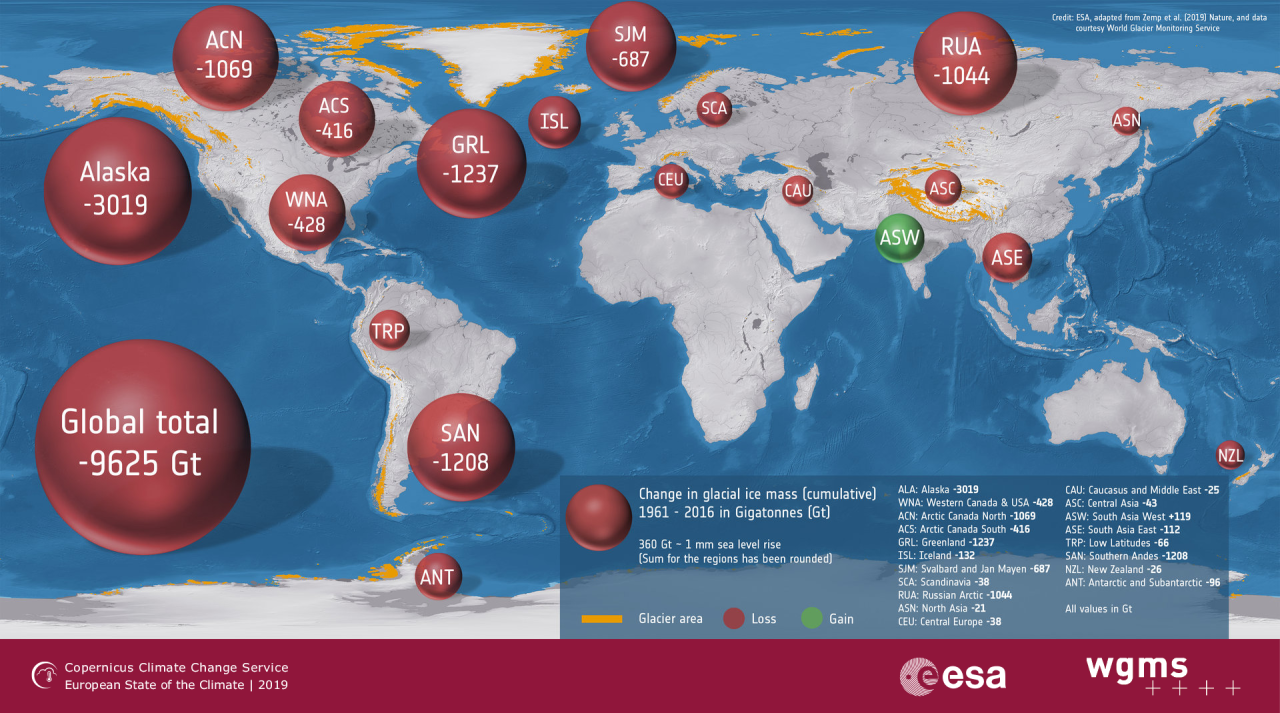
Glacier engineering, the deliberate manipulation of glaciers, is gaining traction as a potential tool to mitigate the impacts of sea level rise. However, its effectiveness and implications are complex, often intertwined with the larger issue of climate change. This interplay demands careful consideration of potential benefits, limitations, and unintended consequences. The relationship between human interventions and natural processes is not always straightforward, and glacier engineering is no exception.Glacier engineering efforts, while aiming to reduce the rate of sea level rise, can have unforeseen consequences.
Strategies may inadvertently alter the natural dynamics of glacial systems, potentially triggering unpredictable responses. Understanding the intricate relationships within these systems is crucial for evaluating the long-term effects of such interventions. The complex feedback loops and interactions within a glacial ecosystem are essential to comprehend when considering the efficacy of any engineering solution.
Relationship Between Glacier Engineering and Sea Level Rise
Glacier engineering techniques, such as diverting glacial meltwater or using artificial methods to accelerate glacier flow, may initially seem to reduce sea level rise. However, these actions might only postpone or redistribute the impact, rather than eliminate it. The long-term consequences of altering glacial dynamics remain largely unknown.
Limitations and Potential Unintended Consequences of Glacier Engineering
Several factors limit the effectiveness of glacier engineering projects. The inherent complexity of glacial systems makes it difficult to predict long-term responses to human interventions. There is a significant risk of unintended consequences, such as accelerating glacial collapse, altering regional water cycles, or disrupting ecosystems dependent on glacial meltwater. A prime example is the potential for creating glacial lakes, which could destabilize the glacial environment and lead to sudden and catastrophic releases of water.
Glacier engineering is a fascinating field tackling the complex issue of sea level rise. While the potential impact of rising sea levels is undeniable, it’s easy to see how the escalating costs of real estate, like those in 2 million dollar homes california , are becoming a significant concern for many. Ultimately, these issues highlight the critical need for innovative solutions to address glacier engineering and mitigate the long-term effects of climate change.
Role of Climate Change in Accelerating Glacier Melt and Sea Level Rise
Climate change remains the primary driver of glacier melt and sea level rise. The increased atmospheric temperatures are causing accelerated melting rates, regardless of any engineering efforts. Addressing climate change is therefore a critical component of any long-term strategy to mitigate sea level rise. Without mitigating climate change, any glacier engineering solution will be temporary and ineffective in the face of the overall trend.
Effectiveness of Different Glacier Engineering Strategies
Different glacier engineering strategies have varying degrees of effectiveness and potential risks. Some methods focus on altering the glacial surface to enhance melt, while others aim to slow the rate of melt. The effectiveness of any strategy depends on the specific characteristics of the glacier and the surrounding environment. It is essential to conduct thorough assessments and simulations before implementing any large-scale glacier engineering project.
Global Implications of this Issue
The global implications of glacier engineering and sea level rise are profound. Coastal communities worldwide face increasing risks from flooding, erosion, and saltwater intrusion. Glacier meltwater plays a critical role in freshwater supplies for millions. The potential impacts on global economies and human societies necessitate a comprehensive and integrated approach to this issue.
Potential Long-Term Effects of Various Glacier Engineering Interventions
| Glacier Engineering Intervention | Potential Long-Term Effects on Sea Level Rise | Potential Unintended Consequences |
|---|---|---|
| Diverting Glacial Meltwater | Potentially temporary reduction in sea level rise at the affected location; redistribution of water resources. | Disruption of downstream water supplies; alteration of river ecosystems. |
| Artificial Acceleration of Glacier Flow | Potentially faster release of water into the ocean, but also potentially accelerating glacier collapse. | Increased risk of glacial lake outburst floods; disruption of sediment transport. |
| Modifying Glacial Surface Properties | Potentially altering the rate of melt, but long-term effects are uncertain. | Unpredictable impacts on the glacial system; potential for increased ice instability. |
Future Projections and Research Directions
The future of our planet’s coastal regions hinges critically on the trajectory of sea level rise, driven largely by glacier melt. Accurate projections are vital for planning adaptation strategies and developing effective mitigation measures. Understanding the potential impacts allows us to anticipate challenges and engineer solutions.
Future Projections of Sea Level Rise
Future projections of sea level rise are highly dependent on the trajectory of greenhouse gas emissions. Different climate scenarios result in significantly varying sea level rise predictions. For example, under a high emission scenario, global sea levels could rise by several meters over the coming centuries, inundating coastal communities and ecosystems. Conversely, aggressive emission reduction strategies could potentially limit the rise to a more manageable level.
These projections often incorporate complex climate models, considering factors like thermal expansion of water, melting glaciers and ice sheets, and changes in groundwater storage. The Intergovernmental Panel on Climate Change (IPCC) provides comprehensive assessments of these scenarios.
Crucial Areas for Future Research and Development
Developing improved models for predicting glacier melt rates is crucial. Researchers need to refine their understanding of how glaciers respond to changing temperature and precipitation patterns. More sophisticated modeling incorporating factors like glacier geometry, ice flow dynamics, and surface albedo changes will produce more accurate projections. Furthermore, investigating the interactions between glaciers, permafrost, and other components of the cryosphere will improve our understanding of feedback mechanisms.
Advanced remote sensing techniques and high-resolution satellite imagery can provide valuable data for monitoring glacier changes.
Role of International Cooperation
International collaboration is essential in addressing the global challenge of sea level rise. Sharing research findings, best practices in glacier engineering, and technological advancements are critical. International agreements and frameworks can facilitate coordinated efforts to mitigate the risks and develop comprehensive solutions. Joint research projects and knowledge-sharing platforms are vital for effective problem-solving and the development of globally applicable solutions.
Glacier engineering to combat sea level rise is a complex issue, and recent developments, like the news about Chris Young’s charges being dropped here , highlight the broader societal and legal implications. While the legal aspects of these cases are certainly important, the bigger picture remains the urgent need for innovative and sustainable solutions to address the rising sea levels.
Scientists continue to explore various approaches, from glacier management to coastal defenses, as the world grapples with this significant environmental challenge.
Potential Future Engineering Innovations
Future engineering innovations could involve developing new techniques for glacier management, such as targeted interventions to stabilize glacier calving or enhance glacial meltwater management. The use of advanced materials and technologies could lead to more effective and sustainable solutions. Exploring the use of geoengineering methods, such as solar radiation management, requires careful consideration and evaluation of potential side effects.
These technologies, while potentially impactful, need to be implemented with meticulous caution.
Need for Integrated Approaches
Integrated approaches are essential to effectively manage glacier melt and sea level rise. Strategies must consider the interconnectedness of various components of the climate system, including the cryosphere, oceans, and coastal ecosystems. Sustainable water resource management, coastal protection measures, and ecosystem restoration are vital components of integrated strategies. Effective management requires coordinated action across various disciplines and stakeholders.
Key Research Questions for Future Studies
| Research Question | Description |
|---|---|
| What are the most effective methods for predicting glacier melt rates under different climate scenarios? | Investigating the factors influencing glacial response to changing climate conditions. |
| How can we optimize the design and implementation of glacier management strategies? | Developing methods to assess the effectiveness of different interventions in stabilizing glacier dynamics. |
| What are the potential impacts of sea level rise on different coastal regions, considering local factors? | Analyzing the specific vulnerabilities of diverse coastal environments and ecosystems. |
| How can international cooperation and knowledge sharing be enhanced to accelerate the development and implementation of solutions? | Developing frameworks for collaboration and knowledge exchange to improve the effectiveness of mitigation efforts. |
Case Studies and Examples
Glacier retreat and the resulting sea-level rise are complex phenomena influenced by numerous factors. Understanding these processes requires detailed analysis of specific glacier responses to climate change. Case studies offer invaluable insights into the challenges and opportunities associated with glacier management and mitigation strategies. They illuminate the interplay between engineering solutions, environmental impacts, and socioeconomic consequences.Detailed examinations of specific glaciers and their reactions to changing climatic conditions provide crucial knowledge for developing effective management strategies.
Analyzing past interventions and their outcomes allows for informed decision-making in future projects. This section explores diverse case studies, highlighting successful and unsuccessful approaches, along with the encountered obstacles.
Glacier Retreat in the Alps
The Alps, a region with numerous glaciers, serve as a critical case study for understanding glacier response to global warming. Observations indicate a significant decline in glacier mass over recent decades. The retreat of these glaciers directly contributes to rising sea levels and impacts downstream communities. Changes in glacier volume influence river flow regimes, affecting water availability for agriculture and hydropower generation.
Engineering Solutions in the Himalayas
The Himalayas, a region with numerous high-altitude glaciers, face significant challenges due to glacier melt. Numerous interventions, including the construction of diversion tunnels and retaining structures, have been attempted to manage glacial meltwater. These interventions aim to protect downstream infrastructure and communities from potential flooding and water scarcity.
Glacier engineering, a controversial approach to mitigating sea level rise, is definitely a hot topic right now. While some scientists are exploring these methods, the recent court victory for Thailand’s Pita Limjaroenrat, a pivotal moment in Thai politics , highlights the need for responsible solutions to global environmental issues. Ultimately, the intricate balance of political decisions and scientific innovations will be crucial in effectively addressing the rising sea levels caused by melting glaciers.
Case Studies: A Geographical Overview
- Alaska, USA: Numerous glaciers in Alaska have experienced significant retreat, contributing significantly to global sea-level rise. Studies have examined the impacts of glacier melt on coastal erosion and the effectiveness of various engineering interventions.
- The Andes Mountains: Glaciers in the Andes are undergoing rapid retreat, affecting water resources for millions. Case studies focus on the challenges of managing glacial meltwater and its impact on agricultural communities.
- The European Alps: The Alps have witnessed extensive glacier retreat, impacting downstream water resources and increasing the risk of glacial lake outburst floods. Research examines engineering solutions for mitigating these risks.
Comparative Analysis of Case Studies
| Case Study | Geographical Location | Glacier Characteristics | Engineering Solutions | Outcomes | Challenges |
|---|---|---|---|---|---|
| Alaska Glaciers | Alaska, USA | Large, fast-retreating glaciers | Monitoring, early warning systems, potential for controlled water release | Limited data on long-term success of interventions. | Remote location, logistical constraints, lack of long-term data. |
| Himalayan Glaciers | Himalayan Range | High-altitude, sensitive to warming | Diversion tunnels, retention structures | Mixed results, challenges in sustainability and long-term effectiveness. | Complex terrain, limited infrastructure, potential for downstream impacts. |
| Andean Glaciers | Andes Mountains | Mountainous terrain, rapid melt | Water resource management, flood control measures | Some success in localized water management, but broader impacts need further study. | Political and social factors influence project implementation and sustainability. |
Challenges in Glacier Engineering Projects
Glacier engineering projects face numerous challenges, including the complexities of high-altitude environments, the long-term nature of climate change impacts, and the limited understanding of glacier dynamics. Financial constraints, logistical issues, and the potential for unintended consequences are further challenges.
“The intricate interplay between glacier dynamics, engineering solutions, and environmental impacts necessitates careful consideration of potential short-term and long-term consequences.”
Conclusion: Glacier Engineering Sea Level Rise
In conclusion, glacier engineering and sea level rise are intertwined challenges requiring a holistic approach. While engineering solutions offer potential mitigation strategies, they must be evaluated within the broader context of climate change and its accelerating impact. The future hinges on our ability to develop sustainable and integrated strategies that address both the immediate and long-term consequences of this complex problem.
Clarifying Questions
What are some potential unintended consequences of glacier engineering?
Potential unintended consequences could include altered downstream water flow patterns, changes in sediment transport, and unforeseen ecological impacts on surrounding ecosystems. Careful monitoring and evaluation are crucial to mitigate these risks.
How does international cooperation play a role in addressing glacier engineering and sea level rise?
International collaboration is essential for sharing knowledge, coordinating research efforts, and developing standardized protocols for glacier management and coastal protection. This collaborative approach can help address the global scale of this issue.
What are some examples of successful coastal adaptation strategies?
Successful adaptation strategies include building seawalls, restoring coastal wetlands, and implementing managed retreat policies. Each approach has unique advantages and limitations, and the optimal strategy often depends on the specific characteristics of the coastal area.
What is the role of climate change in accelerating glacier melt and sea level rise?
Climate change is the primary driver of accelerated glacier melt. Rising global temperatures directly impact glacial ice, leading to increased melt rates and contributing significantly to sea level rise.

